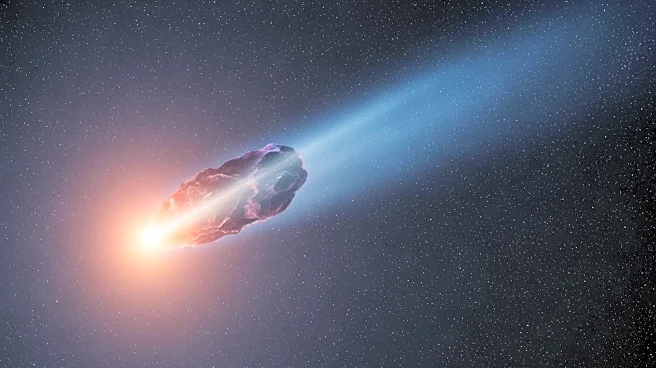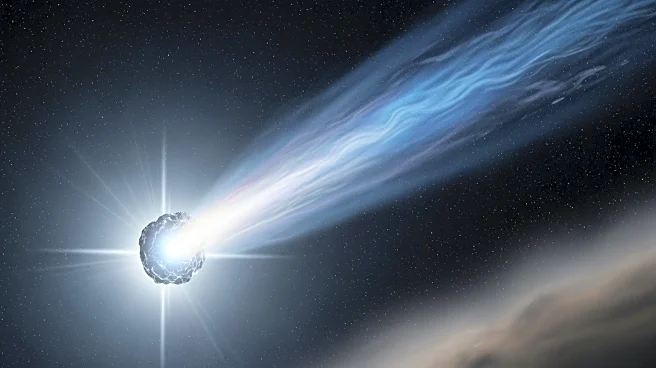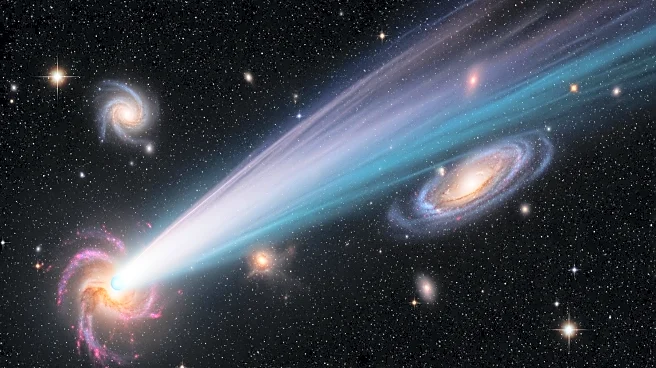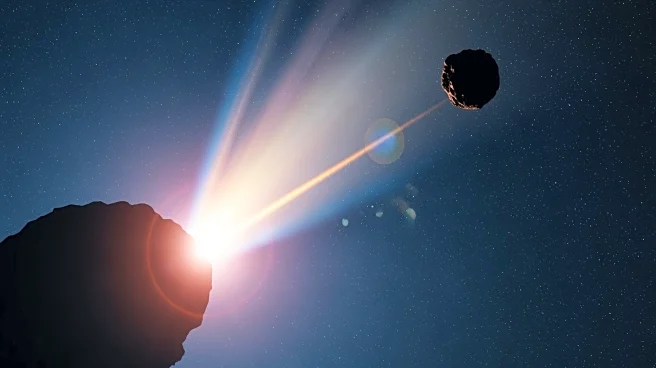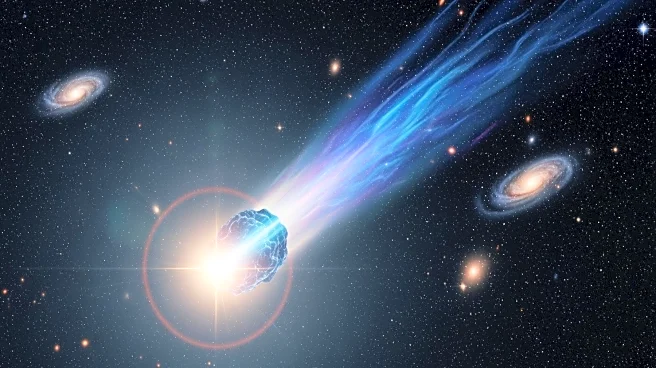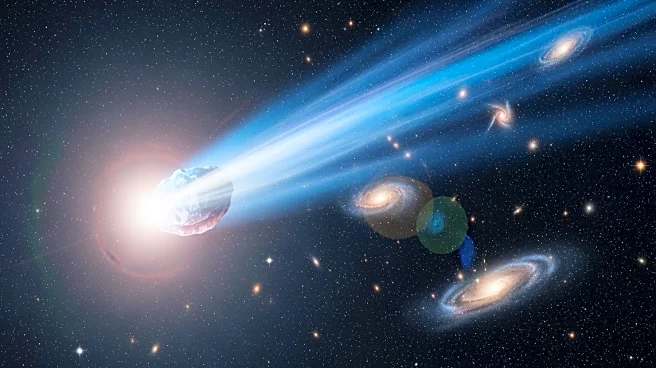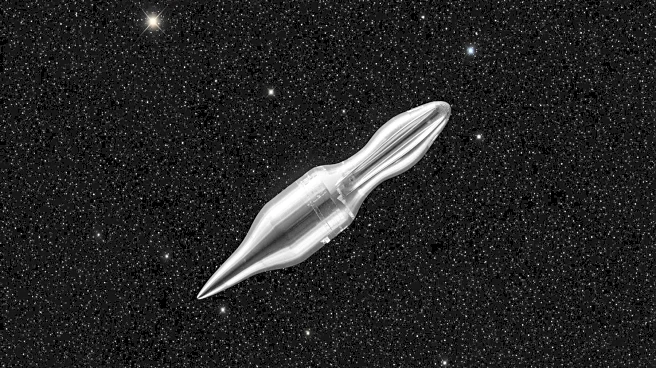What's Happening?
Astronomers have captured a stunning image of the interstellar comet 3I/ATLAS, which is ejecting ice and dust as it approaches the Sun. The image, taken by the Two-meter Twin Telescope at Teide Observatory
in Tenerife, reveals a faint jet of material being expelled due to the comet's proximity to the Sun. This phenomenon occurs as the Sun's heat causes the comet's surface material to warm up and release gases and dust. The comet, which is the third interstellar object to pass through our solar system, has been observed with a blue-green gas coma and a jet extending up to 6,200 miles from its surface. The comet's behavior is typical of such icy objects, with jets pointing sunward and tails extending in the opposite direction.
Why It's Important?
The study of interstellar comets like 3I/ATLAS provides valuable insights into the composition and behavior of celestial objects originating from outside our solar system. Understanding these phenomena can enhance our knowledge of the universe and the processes that govern cometary activity. The observations of 3I/ATLAS challenge existing theories about interstellar objects, including speculative ideas about extraterrestrial origins. By analyzing the comet's jets and tail, scientists can better understand the dynamics of solar wind interactions and the effects of solar heating on cometary materials. This research contributes to the broader field of astronomy and helps refine models of comet behavior.
What's Next?
As 3I/ATLAS continues its journey through the solar system, astronomers will monitor its activity to observe any changes in its structure and behavior. The comet's reemergence from behind the Sun will allow scientists to study its evolution and test various theories about its nature. Continued observations may provide further evidence to support or refute the idea of interstellar comets as natural phenomena rather than extraterrestrial objects. The findings could influence future research on interstellar objects and guide the development of new technologies for observing and analyzing distant celestial bodies.
Beyond the Headlines
The investigation into 3I/ATLAS highlights the importance of international collaboration in astronomy, as researchers from various institutions contribute to the study of interstellar objects. The comet's behavior also underscores the complexity of solar system dynamics and the influence of solar radiation on celestial bodies. These observations may lead to advancements in understanding the potential for life beyond Earth, as scientists explore the conditions necessary for life to exist on other planets. The study of interstellar comets could also inform future space exploration missions and the search for habitable environments in distant star systems.
